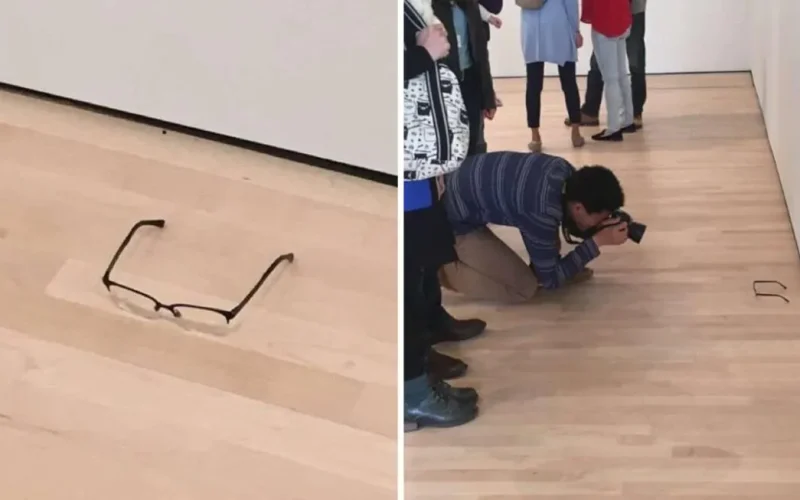The beauty of art lies in its boundless array of forms and ideas, its ability to stir emotions and provoke thought, and its limitless adaptability. Every so often, a phenomenon arises that pushes the boundaries of art further, challenging existing conventions and broadening our understanding of what art can be. Recently, one such phenomenon unfolded in a contemporary art museum when a visitor left a pair of eyeglasses on the floor, intentionally or not, transforming an ordinary object into a perceived work of art.
At first glance, this incident may appear as a mere joke or accidental misunderstanding. However, closer scrutiny unveils deeper implications. This event challenges our understanding of the nature of art, revealing its relationship with context, interpretation, and perception.
The visitor’s act transformed an object into art, not through craftsmanship or creative genius, but simply by placing a common object in an unexpected context. The eyeglasses, an everyday and functional item, became a symbol of mystery—a focal point that attracts attention and invites questions.
Public interpretation elevated this innocuous act to the realm of art. The eyeglasses were observed, photographed, and debated just like any other piece of art in the museum. Their context made them special, granting them meaning and significance. In this sense, the audience didn’t merely “fall for a trap,” but actively participated in the creation of art.
This incident highlights the power of context and perception in defining art. A museum, as an institution, carries with it cultural and symbolic weight. It is considered a venue where items of value and significance are displayed for public education, inspiration, and appreciation. This expectation and reverence we hold for museums endow them with implicit authority.
When we step into a museum, we do so with the expectation of encountering art. We have already accepted the idea that everything inside holds artistic or cultural value, thanks to the context and the institution’s reputation. In other words, the museum, as both a physical and cultural space, has the power to “elevate” objects, transforming the ordinary into the extraordinary, the mundane into the artistic.
Therefore, when the eyeglasses were left on the museum’s floor, the visitors’ expectation of seeing art transformed an everyday object into a work of art. The museum’s context granted the eyeglasses an aura of significance and meaning, and visitors, conditioned by the museum environment, interpreted this ordinary object as a piece of art—observing it, photographing it, and reflecting upon it.
This phenomenon underscores the power of cultural institutions in shaping our perception of art and the role our expectations and assumptions play in defining what we consider to be art. The “Abandoned Glasses” can be viewed as an example of relational art, a term coined by French artist and theorist Nicolas Bourriaud, describing art that relies on human interactions and relationships. In this case, the art emerged from the interaction between the object, the original visitor, other museum-goers, and the museum context itself.
In conclusion, the incident of the “Abandoned Glasses” may seem trivial, but it opens up a vast field of contemplation on the meaning of art and its role in society. This silent interaction reminds us that art is not just what is displayed in a museum or created by a recognized artist. It can emerge in unexpected ways, overturning our expectations and challenging our preconceptions.












